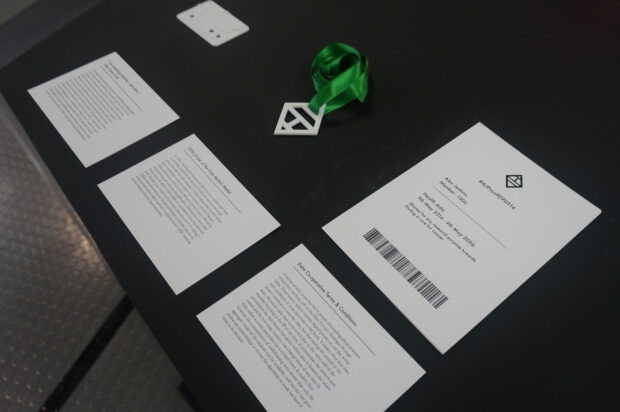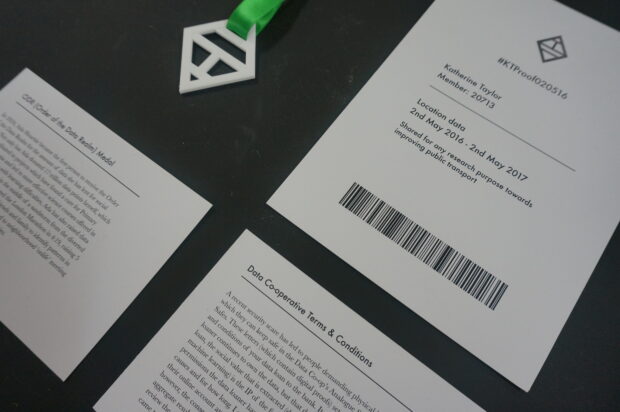Six months after graduating from an MA in design from London College of Communication (LCC), I was fortunate enough to be invited for dinner with the Vice Chancellor of my university (UAL) and the Head of my College (LCC). As part of their Forecasting Futures project, Dr Nicky Ryan and her students from MA Design Management & Cultures had organised an exhibition, conference and series of events exploring the future, and the role that design could play in that.
Within Government, Policy Lab has been experimenting with how speculative design (imaging a range of possible - not just probable futures - and creating an object or story from them) can engage the public and stakeholders in a conversation about the future, exploring what they do want, don’t want and the trade offs they are likely to make. On 23 May, we ran a workshop with Strange Telemetry and Superflux to co-design speculations with stakeholders about the Future of Rail, thinking about a variety of futures where rail is varying degrees of digital, privatised and/or devolved, and where cities are varying degrees of strong economic hubs, green and smart.
Policy Lab - by its name - is experimental, and we try to do some personal or self-initiated projects to experiment with new techniques or forge new collaborations. I worked with Sarah Gold from Projects by IF to come up with some speculative artifacts from a future world where a Data Cooperative belongs. In our current world, business models are already changing to extract greater economic value from data in its own right. In this future world, as well as donating your money or time to good social causes, you would also be able to donate your data. You would have a Data Cooperative Terms & Conditions when you joined [exhibit #1], a Data Donor Card if you wanted to leave your data with the Cooperative after your death [exhibit #2], and an ODR Medal (Office of the Data Realm) if you had raised loads of data for charity during your life. We are not saying that we think these objects will definitely exist - but wanting to provoke feedback from people about a future where they might.

As exhibitors, and practitioners who were trying to apply speculative design techniques to practical problems, Sarah and I were invited to participate in a conversation dinner to explore the future of design education. The conversation was wide-ranging and practically focused, with design educators and industry practitioners from a variety of design fields. Two points stood out for me in particular.
In our project with GO-Science on the Future of an Ageing population, one of the key challenges was around the future of work. As we live longer, we will have to work longer but not always in the same jobs that we started with. Data science and automation is going to radically change some sectors as well as make others emerge. The sharing or collective economy will allow more horizontal networked careers as well as roles in more hierarchical organisations. Gone is the job for life, we are going to enter a world of hybrid, portfolio careers where lifelong learning is a must.
With that in mind, the future of design education might want to focus on these lifelong learners, providing people with both a design approach and/or some practical design skills (e.g. UX, product design, service design etc) to apply to their previous field (whether than be heavy industry, health or legal practice). Both myself and the Vice Chancellor I was sitting next to, Nigel Carrington, had done MAs in art and design after careers as a policymaker (me) and lawyer (Nigel) which have led us to new positions (with Nigel’s far more illustrious than mine!).
The second point was around the debate between being a design polymath or a specialist. A design polymath - or hybrid designer - is someone who has mastered (and probably combined, merged and mixed) a range of different design specialisms together. The 2005 Cox Review of the Creative Industries recommended, that in order to stay competitive, the UK needed to create more multi-disciplinary courses of management, design, science and engineering specialisms. Over the last 10 years, as these courses have been created, as design research thinking has developed and as new practices have emerged (especially service design), there has been a greater focus not just on the design polymath as someone who combines various design specialisms, but on the additional skills the require of networking, connecting and a ‘designerly approach’ that binds the specialisms together.
We all agreed that the design polymath is necessary but rare and needs to be sought out. As Guy Julier (Professor of Design Culture at the University of Brighton) described it, it is the person who can apply wide variety of specialisms (e.g. design specialism such as product, graphic service design but also science, tech and engineering) in a particular field (e.g. health) as opposed an expert in one specific design specialism who can apply it to a wide range of contexts.
What was interesting for me is when you see the additional skills of a ‘problem-solving’ ‘designerly’ approach as a specialism in its own right, and apply these to people wanting to re-train to approach their previous field in new ways, or to look outwards for new challenges.
After I completed my first degree in History and French, the civil service did not take me on because I could speak French or had an intimate knowledge of 1930s Germany. It was because of the transferable skills of analysing and synthesizing knowledge and creating coherent narratives. And now after my second degree, it’s not necessarily the specific graphic design skills that I am applying to real life policy problems such as homelessness and health, but the general design approach of reframing questions, understanding the users and prototyping ideas.
Taking these two thoughts together, you could well imagine cohorts of non-designers coming out of roles in specific sectors, for whom a design education could offer both specialist design skills but also a more general problem solving and networked approach which they could apply back into that sector, new sectors or somewhere else entirely.

1 comment
Comment by F Stansfield posted on
A thought provoking article. I completely agree that there is a lack of courses that span science, art and design and management as a combination of these skills could be applied and be beneficial to many roles in all sectors.